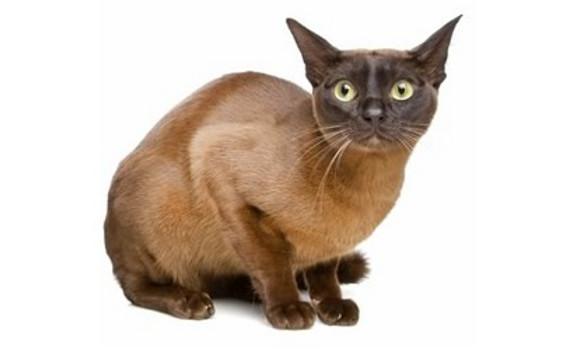History and Origin
The history of the Burmese cat breed traces back to 1930 with a female cat named Wong Mau, brought to the United States from Yangon, Myanmar (formerly Rangoon, Burma). It is believed that Wong Mau was either brought by a sailor and given to Dr. Joseph Thompson, a U.S. Navy doctor, or directly by Dr. Thompson himself, who had a keen interest in the Far East and its feline inhabitants.
Dr. Thompson, having spent time as a Buddhist monk in Tibet, was fascinated by the shorthaired, brown cats prevalent in the region. These felines, referred to as “copper cats,” have existed in Southeast Asia for centuries. They were even depicted in the ancient Thai manuscript, the Cat-Book Poems, dating from 1350 to 1767, which also illustrated the Siamese and Korat cats. According to legend, the Burmese cat descends from a breed once revered in Burmese temples as embodiments of gods.
Thompson was captivated by Wong Mau’s unique brown coat and charming personality. He aimed to determine her genetic makeup and establish a scientific breeding program to produce more cats like her. Without a male counterpart, Wong Mau was bred with a seal point Siamese named Tai Mau. The resulting kittens exhibited three color variations: beige, brown, and pointed.
Further investigation revealed that Wong Mau was a Siamese hybrid, half Siamese and half Burmese. The sable (brown) kittens were crossbred with each other or back to Wong Mau. It was discovered that the Burmese gene responsible for the sable color belongs to the albino gene series, reducing the pigment in the hair to create the dark sable brown appearance. Today, the point-restricted color is less noticeable in adults but can be observed in Burmese kittens.
In 1936, the Cat Fanciers’ Association (CFA) accepted the Burmese breed. However, due to ongoing outcrossing with Siamese cats and the resulting hybrids being sold as purebred Burmese, confusion arose. The CFA withdrew recognition of the Burmese in 1947, while other associations continued to recognize the breed.
Despite this setback, breeders persisted, and the CFA reinstated the Burmese for recognition in 1953 and for Championship status in 1957. This renewed acceptance was based on a new standard allowing only solid coat colors without markings.
Physical Characteristics and Variants
Over the years, the Burmese cat’s body style has evolved. The 1953 standard described them as medium-sized, dainty, and long. By 1957, the standard had changed to a more compact form, midway between Domestic Shorthair and Siamese. Since then, the standard has remained virtually unchanged.
A divergence in opinion among breeders has led to two distinct conformation types: the European Burmese and the Contemporary Burmese. The European Burmese features longer, narrower muzzles with a less pronounced nose break and a slightly narrower head. In contrast, the Contemporary Burmese has a shorter, broader muzzle, a pronounced nose break, and a broader, rounder head.
The European Burmese is recognized as a separate breed in some associations, including the CFA (in the miscellaneous class) and the CFF, CCA, and UFO under the name “Foreign Burmese.” The breed’s introduction to European Siamese lines, which possessed the red gene, has resulted in additional colors like red and cream, producing six more color variations.
Personality and Temperament
Burmese cats are known for their amusing, playful, and intelligent nature, making them ideal interactive companions for homes, offices, and other environments where people need love and entertainment. They are as active as Siamese cats and enjoy playing. Loyal and people-oriented, Burmese cats are devoted to their owners.
There are notable temperament differences between males and females. Female Burmese cats are highly curious, active, and emotionally involved with their owners. Altered males, while equally loving, are more placid and enjoy lounging around, often on top of whatever their owner is doing. They take life as it comes and are primarily concerned with their cuisine and feeding times.
Burmese cats have a unique, raspy voice that sounds like they are hoarse from too much talking. They are not as vocal as Siamese cats, except when in season. However, when they have something to say, they will reiterate their message until their needs are met.
Health and Care
Burmese cats are generally healthy and hardy. However, they require regular veterinary check-ups to maintain their health. They have minimal grooming needs due to their short coats, which require only occasional brushing to remove loose hairs and maintain a sleek appearance.
Compatibility with Children and Other Pets
Burmese cats are known for their good-natured disposition and compatibility with children and other pets. They enjoy interacting with their human companions and are known to form strong bonds with their families.
Conclusion
The Burmese cat breed, with its rich history, distinct physical characteristics, and endearing personality, continues to be a beloved companion for many cat enthusiasts. Whether you prefer the European or Contemporary Burmese, these cats are sure to bring joy, love, and entertainment to any household.

